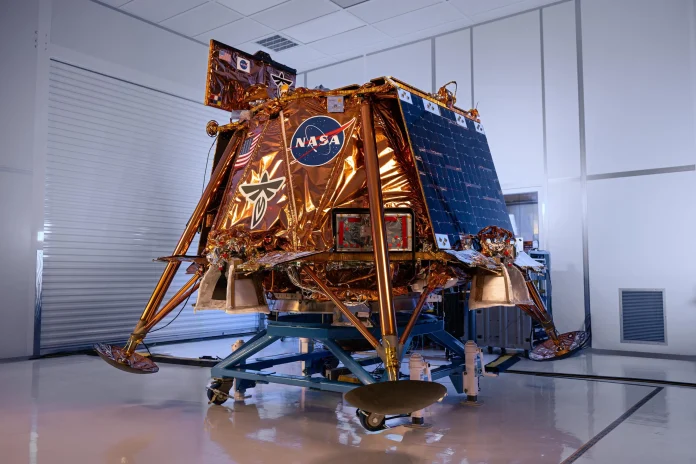Are you a space enthusiast? If yes, then we have news for you because Firefly Aerospace’s Blue Ghost Mission 1 is a historic moment that was launched successfully aboard SpaceX’s Falcon 9 rocket from NASA’s Kennedy Space Center in Florida on January 15, 2025. This ambitious mission falls under the auspices of NASA’s Commercial Lunar Payload Services which is going to be an important aspect of the Artemis program focused on sustainable exploration of the Moon and paving the way for human missions to Mars.
Blue Ghost Lunar Lander: Exploring the Moon’s Surface
The Blue Ghost lunar lander, which comes with ten advanced instruments, will explore the surface of the Moon, studying the new technology of space. Contributing to science, it showcases public-private partnership strength in exploring the frontiers of space.
Firefly Blue Ghost Mission 1 Advancing Lunar Science
Scientific Payload and Lunar Exploration
The first objective of Blue Ghost Mission 1 is to help us get to know the Moon much better. The lander is hosting the scientific payload meant to experiment with and study the composition of the lunar surface, as well as measure radiation levels. These will be the most important inputs to design human missions in the future as per the Artemis initiative.
Technological Demonstrations for Lunar Exploration
The mission also entails several technological demonstration missions that have been put out to test pioneering systems for their use in exploring the Moon into the future. These advancements have been deemed significant in attaining NASA’s milestone of creating a sustainable presence on the Moon.
SpaceX Falcon 9: Launch vehicle for Blue Ghost Mission 1
Reliability of Falcon 9
Spacecraft launched on Blue Ghost Mission 1 by a Falcon 9 rocket. The Falcon 9 is said to be the most reliable and reusable rocket; hence, this will provide affordable access to space, making this kind of mission more frequent.
Countdown Events to Launch
The countdown involved the following events to ensure the sequence of events in this mission was on time:
- T-35 minutes: The rocket was fueled with RP-1 kerosene and liquid oxygen.
- T-7 minutes: The rocket engines were cooled for firing.
- T-1 minute: Falcon 9 internal power switch, rocket final checks
- 1:11 a.m. EST Liftoff: The rocket shot into the dark of night, blasting off for the Moon.
Flight conditions: Falcon 9 reached Max Q, the time of maximum stress due to aerodynamics, at T+1:12, and successfully dropped the first stage by raising the spacecraft.
Lunar Lander Scientific Instruments On Board Blue Ghost
The Blue Ghost lander has carried ten payloads in science and technology to specific research objectives.
Composition Analysis at the Surface of the Moon
Analyzing instruments that examine mineral composition in a particular way helps scientists understand the way it might have formed and, hence evolved.
- Monitoring of Radiation Level: Sensors monitor radiation levels that are needed to help plan safe astronaut environments.
Thermal Mapping
Analysis through advanced instruments about temperature variability at the surface of the lunar environment.
- Demonstrations of Technology: the most advanced systems in test readiness for deployment in future missions to the lunar
- Payloads will help NASA achieve its broad objectives toward furthering the science and toward preparing for the exploration of space by humans.
Commercial Lunar Payload Services (CLPS) at NASA
The Role of CLPS in Lunar Exploration
Lunar exploration strategy falls within the orbit of the CLPS initiative as it seeks a collaboration with a private company Firefly Aerospace towards faster development in the most cost-effective manner.
Under CLPS, private landers such as Blue Ghost will carry scientific instruments and experiments to the Moon. These missions supplement the Artemis program in preparation for sustainable exploration of the Moon.
Role of the Artemis Program
The Artemis program is a bold vision of NASA’s future space exploration. The program will look to have a permanent human presence on the Moon as a stepping stone to Mars.
Blue Ghost Mission 1 is a key milestone in this journey. By gathering data and testing new technologies, the mission supports Artemis’s long-term objectives, including:
- Developing infrastructure for human habitats.
- Demonstrating systems for resource utilization.
- Preparing astronauts for deep-space missions.
This makes public-private collaboration more important to be able to meet these objectives.
Reusability and Sustainability of Falcon 9
This milestone of launching includes the fact that at T+7:58 seconds, the booster of Falcon 9 is observed to be precisely landing, which is ready to perform for a much longer time in the future in order to reuse this booster.
The hallmark of this design is that SpaceX uses reusability, wherein the costs of launching would be relatively high. This increases the chances of launch of great projects like Blue Ghost Mission 1 for cheaper launch experiences.
Challenges With the Mission
The very nature of lunar missions is challenging as it requires much planning and flawless execution. Several potential problems, like the following, were associated with Blue Ghost Mission 1:
Bad weather at the launch site.
- The technical complexities in rocket propulsion and stage separations.
- Thanks to the expertise of teams at NASA, SpaceX, and Firefly Aerospace, the challenges were easily overcome, meaning the mission will be successful.
Live Coverage of Firefly Blue Ghost Mission 1
Millions around the world watched the NASA Blue Ghost Mission 1 take off live on NASA TV and other web-based platforms. The mission proved to be an opportunity to highlight the interest in space exploration in the world and inspire viewers of all ages.
Significance of Firefly Blue Ghost Mission 1
Those missions will lead to the following:
- Bringing additional scientific payloads to the Moon
- Testing new technologies for resource utilization and habitat construction
- Enabling necessary data for the first crewed Artemis landings.
- What the knowledge garnered from those missions will contribute to the advancement of space travel is a move further to expand the reach into the cosmos by humanity.
Conclusion
The launch of Firefly Aerospace’s Blue Ghost Mission 1 aboard SpaceX’s Falcon 9 is a giant leap in the history of lunar exploration. A combination of scientific discovery and technological innovation, the mission is part of the CLPS initiative under NASA’s Artemis program.
By fostering partnerships with private companies, NASA is redefining the possibilities of space exploration. The success of Blue Ghost Mission 1 is a step closer to a sustainable presence on the Moon and an eventual journey to Mars.
As humanity reaches for the stars, missions like Blue Ghost remind us of our collective potential to overcome challenges, push boundaries, and achieve the extraordinary.








